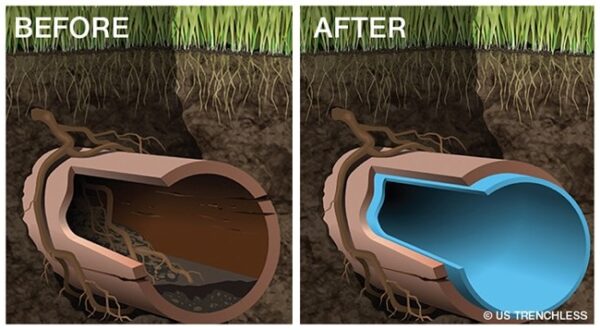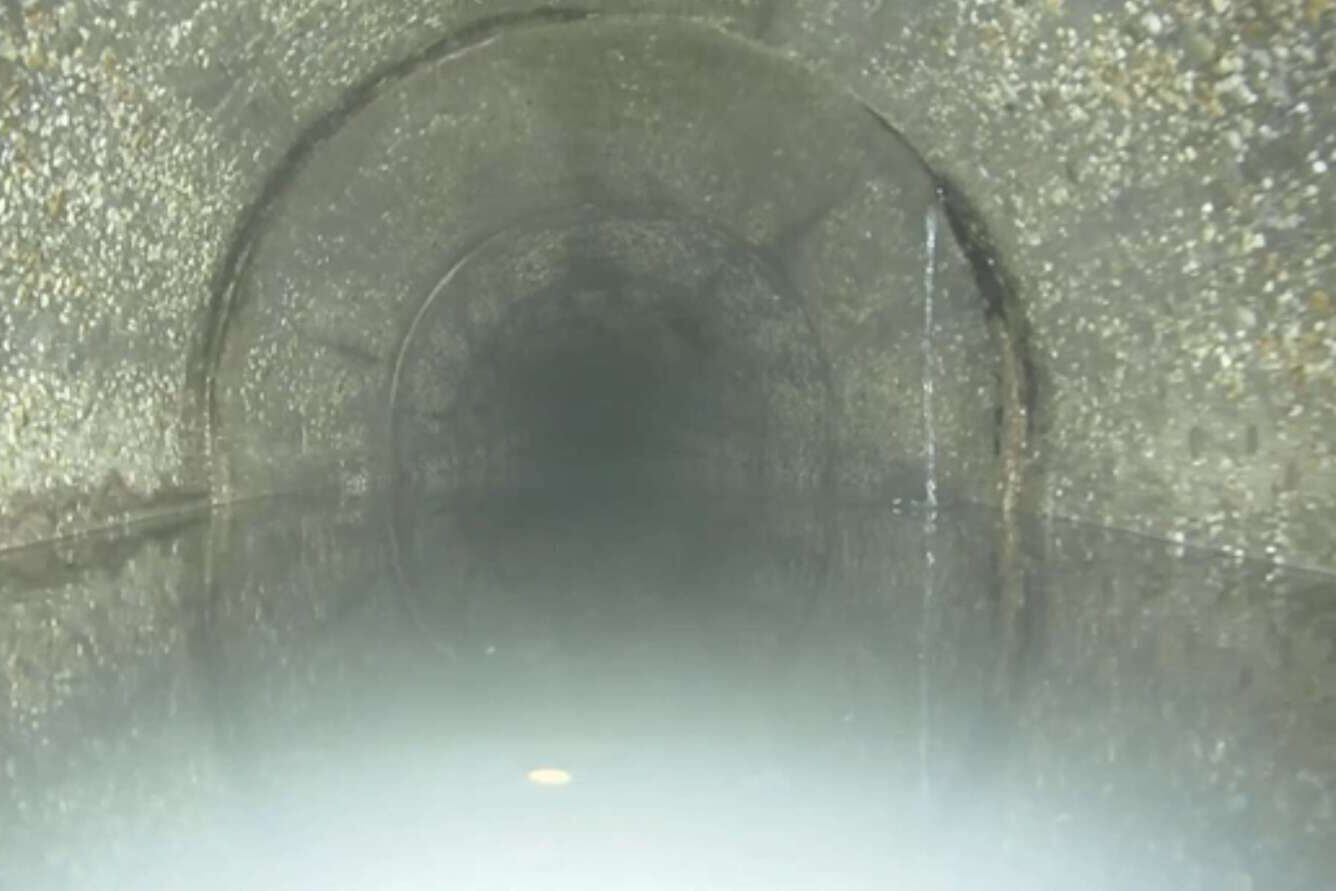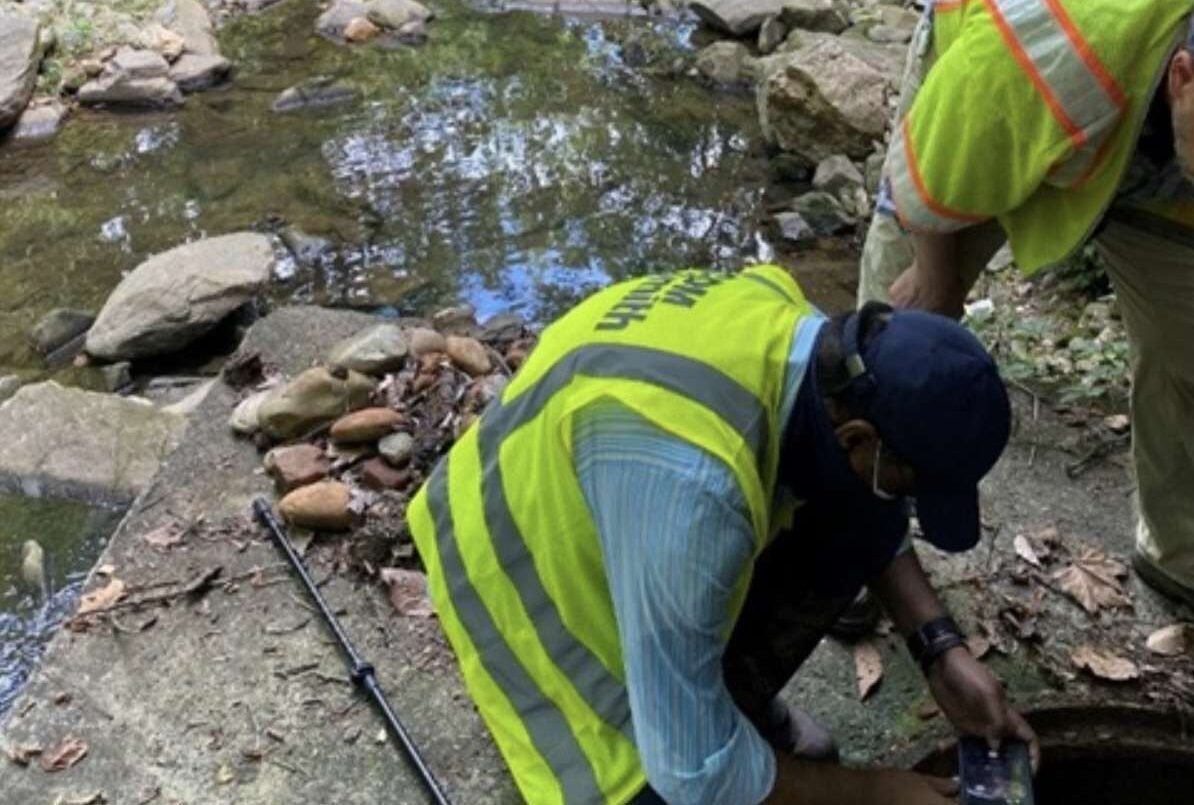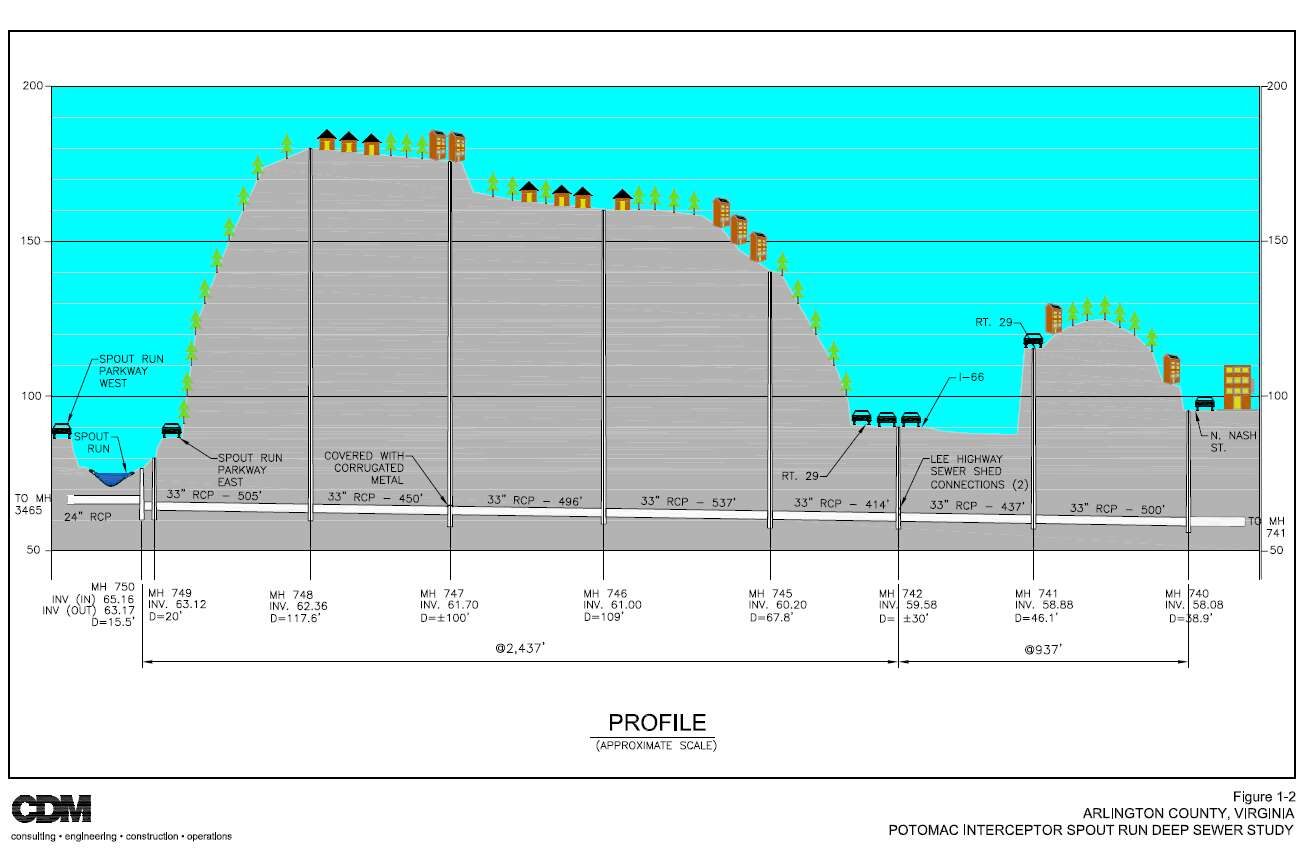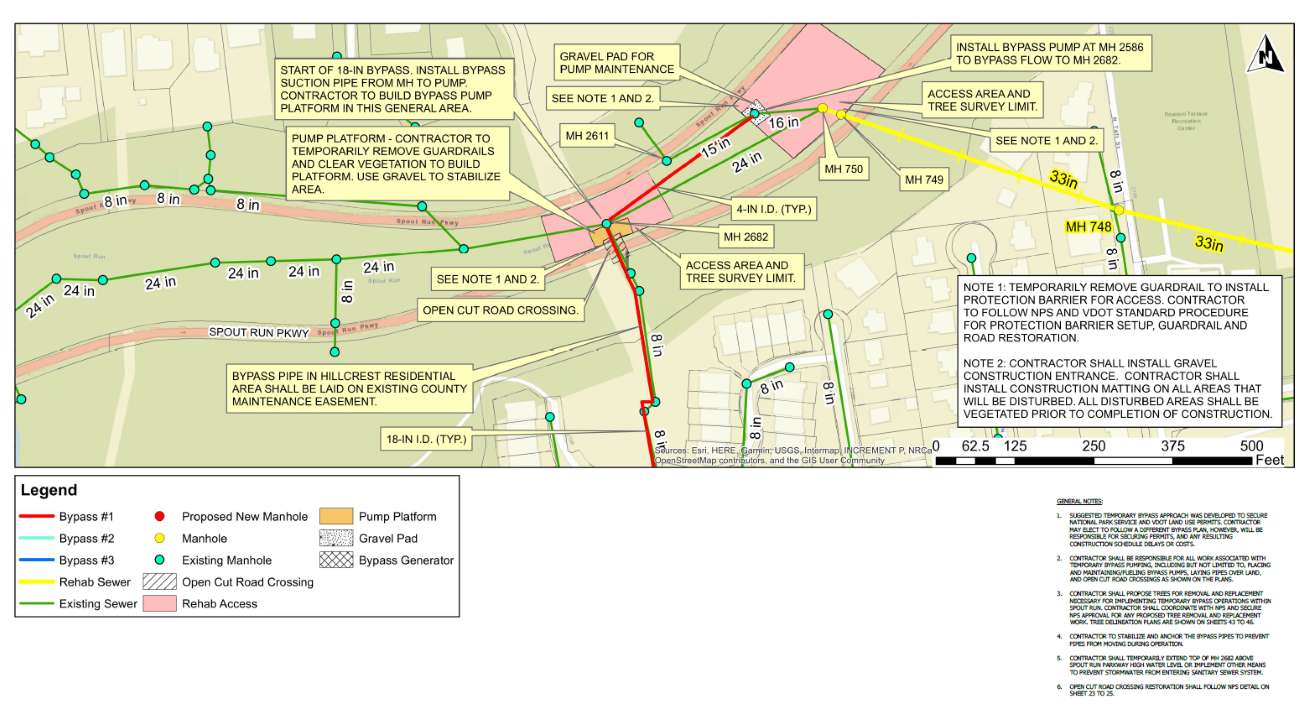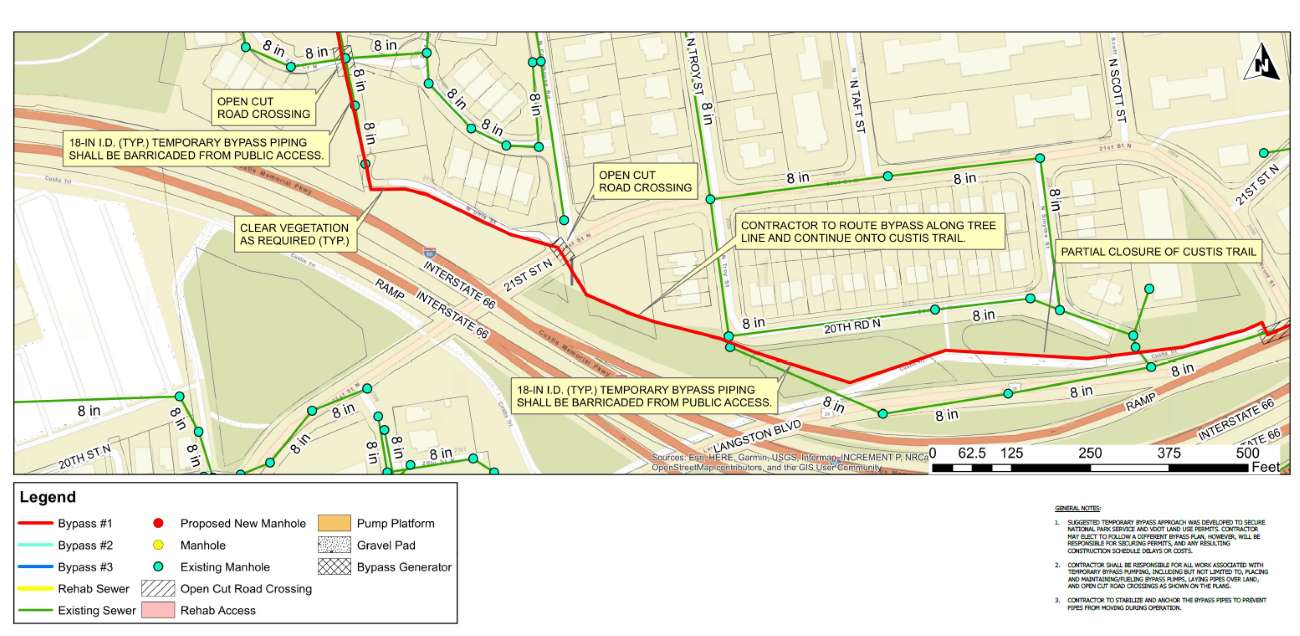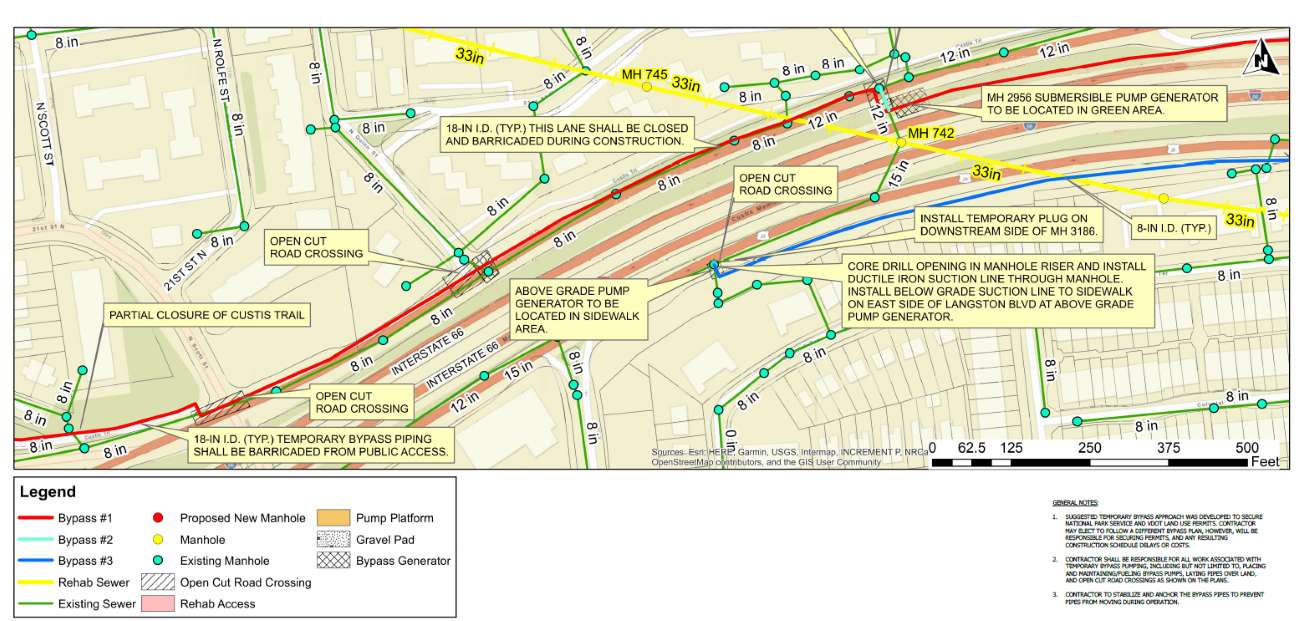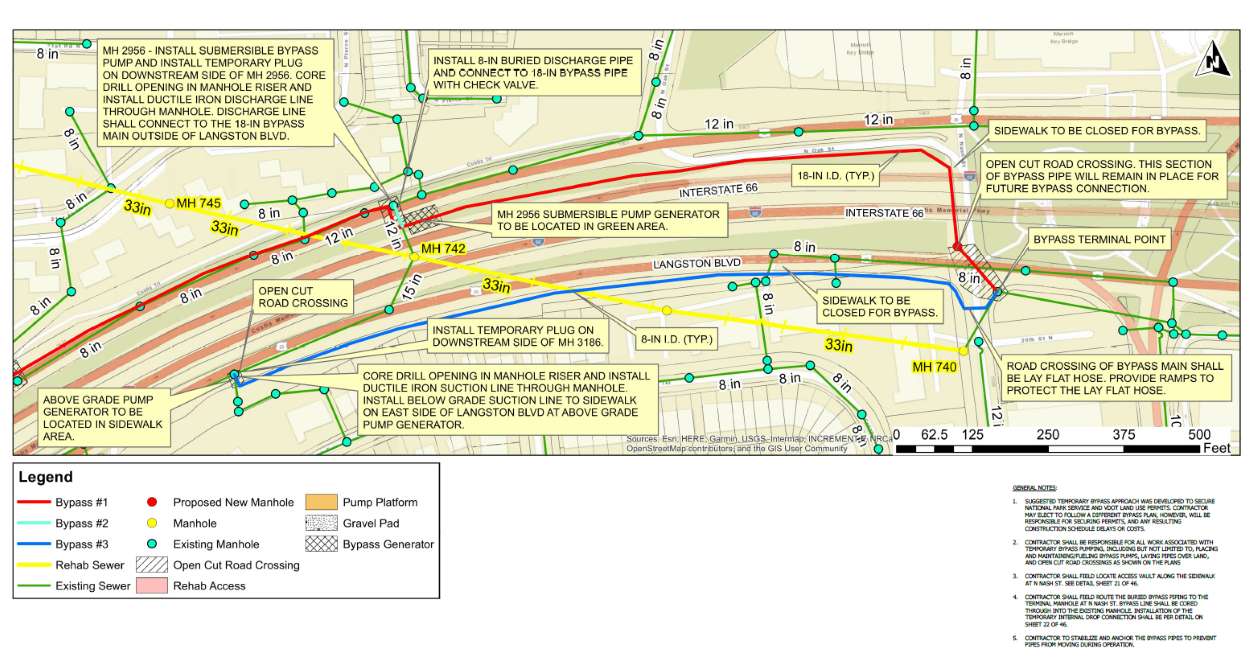A sewer repair company put a price on dealing with federal and state agency permitting processes and working on high-traffic roadways.
That price tag is just over $2.6 million.
Arlington County is poised to pay that extra sum, conceding that the location of the project in question presents “unique challenges.”
To repair an “essential part” of the county’s sanitary sewer system — dubbed the Spout Run Deep Sewer Line — the selected contractor, AM-Liner East, will have to navigate distinct permitting processes and regulations for the National Park Service and the Virginia Dept. of Transportation.
This pipe carries “a significant amount of flow” from federally protected land, and along Langston Blvd and I-66, with the pipe reaching depths up to 115 feet below ground, according to the county.
After getting permission from NPS to work on protected parkland, the contractor will seek state permission once it hits I-66. It will be working on a narrow median and shoulder of I-66 and multiple travel lanes in both directions on Langston Blvd.
“It is believed that the bidders perceived significantly more risk in these bid items, which County staff consider fair given the unique challenges of this project area,” per the report.
For these reasons, AM-Liner East — the lowest responsible bidder — still exceeded expected project costs of $5.3 million. The Arlington County Board is scheduled to approve a $7.9 million contract, plus a $1.2 million contingency “for change orders or increased quantities,” at its upcoming Saturday meeting.
The proposed project generated what the county described as significant interest from nine contractors specializing in trenchless sewer rehabilitation. Only two bid on the project, however — a testament to its perceived challenges.
“For the work on federal lands and in VDOT right-of-way, the contractor will have to comply with restrictive NPS and VDOT permit requirements, respectively, and perform all restoration as per each agency’s specifications, which differ greatly from each other and from the County’s specifications,” the report said.
Arlington County says it identified this 86-year-old sewer line for repair in 2019 after a video inspection “revealed corrosion of the concrete pipe, indicated by exposed aggregate, exposed reinforcing steel, infiltration at the pipe joints, and small cracks.”
The project is part of the county’s program to rehabilitate critical large sewers, which are part of Arlington’s 465-mile sanitary sewage system. This project will start at Spout Run, north of the N. Courthouse Road cul-de-sac and end at N. Nash Street.
“This intricate network exists to make sure that the wastewater that gets flushed every day from homes and businesses makes its way to the Water Pollution Control Plant where it’s properly cleaned and treated before being recycled back into the environment,” the project webpage says.
For this project, AM-Liner East will use a trenchless technology known as cured-in-place pipe lining, which is seen as a relatively quick way to fix pipes with little or no digging involved.
A flexible liner is inserted into the pipe, inflated and exposed to heat or ultraviolet light to harden it and create a new, smooth surface inside.
To ensure this is done without disrupting existing flow, the contractor will install a temporary bypass. The bypass will be above-ground through residential grass areas along N. Uhle St, the Custis Trail and one lane of Langston Blvd. It will go underground near street crossings, such as at N. Scott, N. Quinn and N. Nash streets.
